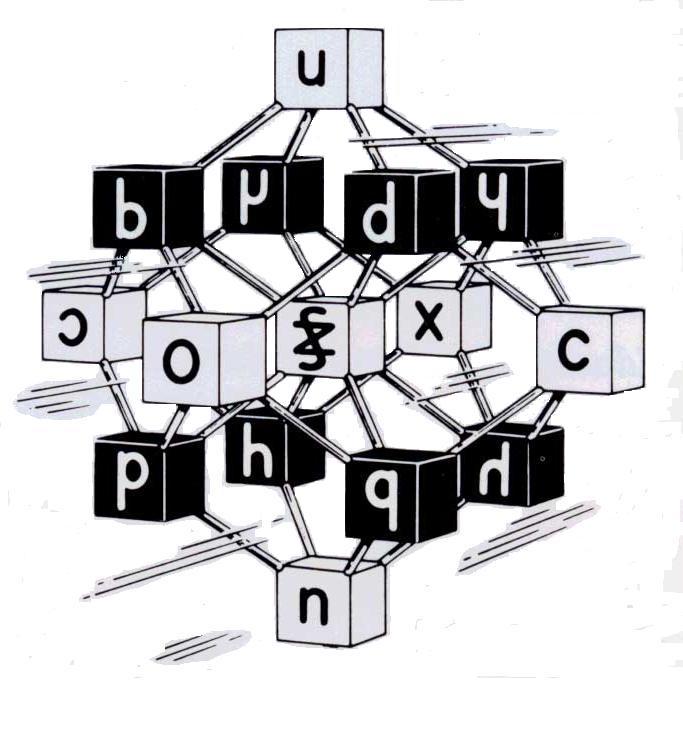Recent
Patents
# 4,273,542
Image Gallery
Chronology
Useful Links
Tony Smith Background
Notation Systems
Logic Tutorial
|
|
Logic Alphabet Project We need a better set of signs for and, or, if . These three are themselves only a small part of the 16 binary connectives. But they are also fundamental in symbolic logic and, more specifically, in what is called the logic of atomic sentences. In this case, atomic means undivided totality. The X-Stem Logic Alphabet (XLA) was devised and is actively being developed by Shea Zellweger. The main emphasis of the project lies in presenting, clarifying, and acting as a clearing house for the new notation. The new notation embodies, exposes, and elucidates the deep symmetry properties that inhabit the interrelational structures in logic; more specifically, in what is also called the 2-valued propositional calculus. The new notation consists of 16 letter shapes. It is a shape-value notation. Each letter shape is designed to be cursive, phonetic, iconic, and in-part topological. The 16 cursives are also selected to encode a fundamental set of properties in algebra, in geometry, in symmetry, and most of all, in logic. |
|||||||
|
|
|
|
|||||||
|
The construction of the X-Stem Logic Alphabet comes under the general area now called "sign factors engineering." This enters cognitive ergonomics in such a way that it extends and carries Peirce's box-X notation (1902) into transformational logic. This introduces both a symmetry notation and a mirror notation that sees itself as a form of iconic logic. Other links put the emphasis on operational logic, (inter) relational logic, polyhedral logic, and crystallographic logic. Contact Us - Copyright © 2002-2008 Logic Alphabet Association |
|||||||||
|
|
|||||||||

